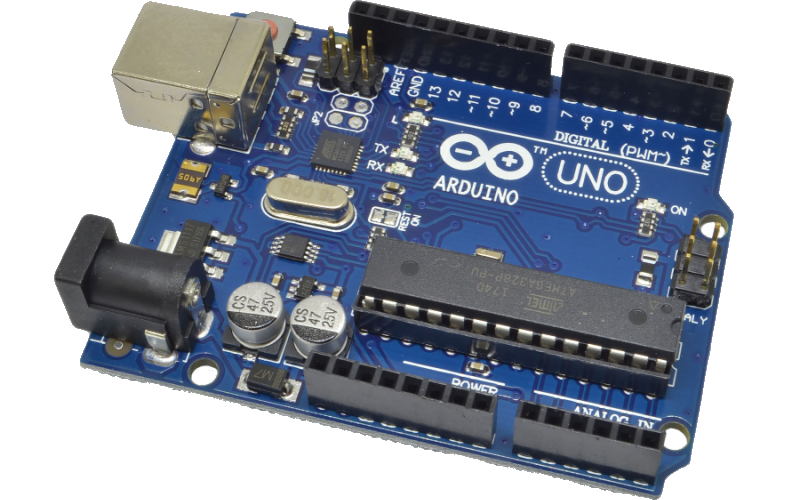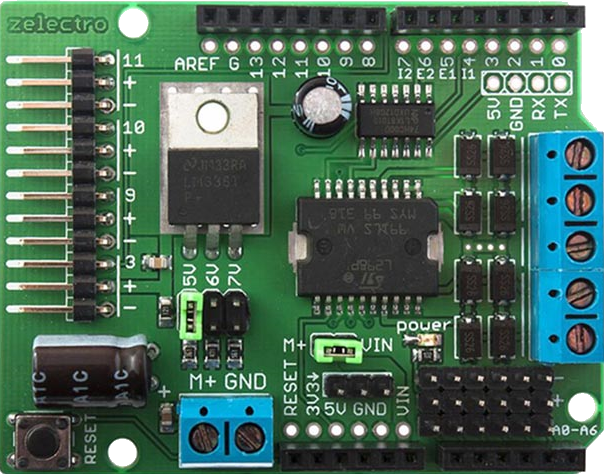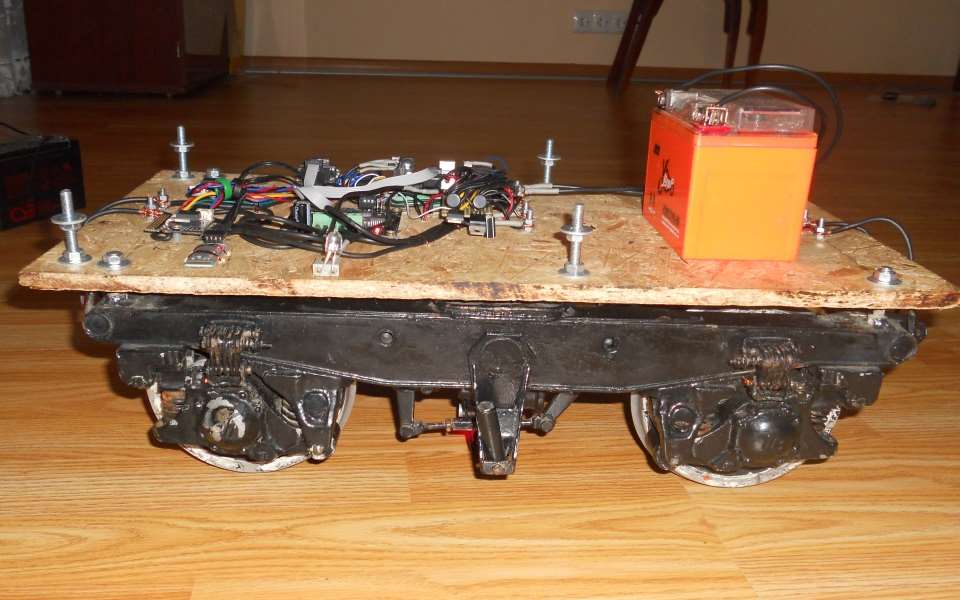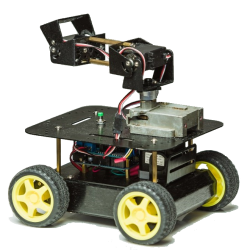Driver L298P

Using a motor driver on an L298P chip, most often soldered onto a separate board with independent power supply (the so-called motor-shield). One chip provides independent control of two DC motors, or one stepper motor. Requires two to three digital pins per motor. 
Mobile platform for testing electric motors

Mobile platform for testing electric motors. Allows you to control the movement of the platform in real time, which moves along the test route and take parameters from the sensors.
Soft starting a DC motor using timers

Article-series: Arduino, using DC motors #2
When it comes to controlling DC motors, there are times when you may need to make sudden changes in speed, such as going from 0% power to full power or changing direction. However, this type of operation requires very high currents, much more than simple movement. To address this issue, it's possible to implement a smooth start for the motor by utilizing both the standard delay function delay() and timers.
Connect a DC motor. Microcircuit L298P

Article-series: Programming Arduino from scratch #7
Article-series: Arduino, using DC motors #1
Consider the option of connecting a conventional DC motor to the controller, which can be used, for example, to move the robot or perform useful work. To do this, we will use a motor controller based on the common L298P microcircuit.
Creating a class for working with DC motor

Article-series: Arduino, using DC motors #3
One controller can control multiple DC motors. Since the control code will be the same, that is, allocate a separate class for it. Then, when adding a new engine, it will be enough to add just a few lines, and not copy the same functions and variables for each.
Connecting a stepper motor. Controller L298

Article-series: Programming Arduino from scratch #8
Article-series: Arduino, using stepper motors #1
Let's try to connect a stepper motor to the controller via the L298 chip and look at the basics of controlling it using the standard Stepper library

 Books
Books Technology
Technology Electronics
Electronics Programming
Programming Weaponry
Weaponry Arduino
Arduino All tags
All tags Projects
Projects